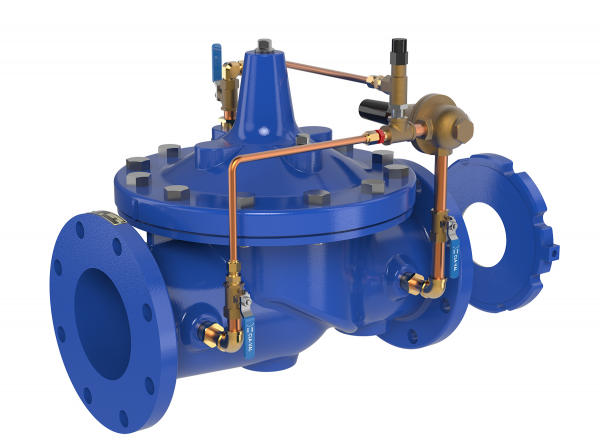Industries make use of countless types of valves in a variety of applications. And, when it comes to flow control valves, its types range from simple to sophisticated. Regardless of their construction, flow control valves regulate the pressure or flow rate of liquids or gases through a pipeline. They optimize the system performance by relying on the flow passage with a variable flow area.
What Is The Function Of A Flow Control Valve?
Depending upon the type, a flow control valve serves different functions in a hydraulic flow system. One common use is to regulate the speed of cylinders of motors within a system. Probably, it’s due to the flow control valve’s capability to affect the energy transfer rate at a given point in a system.
System operators use flow control valves to depressurize a hose or change the fittings quickly. Also, they are used in several customer applications, such as faucets, showers, lawn watering system, etc. to reduce the amount of water consumed. These valves have a long life and aren’t prone to clogging due to their design.
Flow control valves have wide use in the applications around the food processing industry, material handling, warehouse equipment, automated factory, etc.
What Are The Types Of A Flow Control Valve?
Industries commonly use the following types of flow control valves:
- Ball Valves
- Diaphragm Valves
- Needle Valves
- Butterfly Valves, etc.
Ball valves are the simplest of all the contro valves, as they have a simple design. They consist of an inner ball attached to a handle. As the handle turns a quarter turn, a hole through the ball’s center turns perpendicular to or aligns with the valve openings, thus allowing or shutting off the flow. A butterfly valve does the same thing by opening and closing an internal metal plate.
Diaphragm valve features a flexible disc that contacts a place at the top of the valve body and forms a seal. It’s flexible, pressure-responsive, and transmits force to open, close or control a valve.
A needle valve is more precise and allows greater flow control. It has an adjustable needle and a valve stem to restrict or allow the fluid flow.
What Are The Uses Of A Flow Control Valve?
The flow control valve fittings reduce the flow rate in a specific area of a pneumatic system that reduces the speed of the actuator. As a needle valve controls the flow of liquid in two directions, a flow control valve directs it to the system flow in one direction.
Below are some of the uses of a flow control valve-
Boosts Financial Returns
The flow control valves allow the operator to use the resources efficiently. Thus, businesses experience reduced process variability that helps increases financial returns.
Helps Save Water
Using flow control valves in faucets help conserve a lot of water. It means you can save money on water bills by employing these valves into the HVAC systems in offices, homes, or factories.
Reduces The Working Pressure
These valves allow the operator to depressurize the hose quickly. Turn the hose off and open the valve to release any backpressure. You can use these valves to minimize the risk of over-wetting, as well as to achieve the drying times faster.
It’s Ecologically-Friendly
Not to mention, today, businesses focus on meeting global ecological standards. By using these valves, they can reduce the wastage of natural resources and become eco-friendly.
Assist In Post Guiding
A flow control valve is also used when there is a risk of fouling. A post is a section of stem that extends into the valve’s body. The post supports the plug to bear loads, while the narrower stem provides position control.
The best-quality flow control valves not only do their job effectively but also eliminate any possible noise, oscillation, vibration, etc. Moreover, they won’t clog or flush back. Look for a reliable manufacturer to find the premium quality flow controls for industrial or domestic purposes.
